Hyacinth in a pot: planting and care
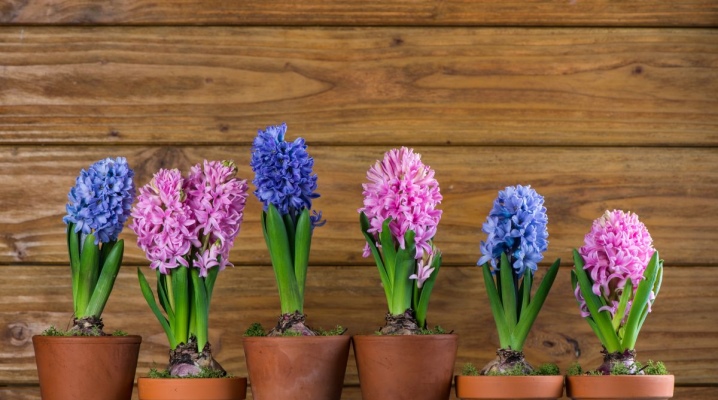
Garden shops offer a wide variety of plants that can be grown at home. The ideal houseplant combines easy maintenance, compact size and attractive appearance. These are the characteristics of hyacinth. This flower belongs to the asparagus family. The lush and vibrant bloom is accompanied by a pleasant and enchanting scent.
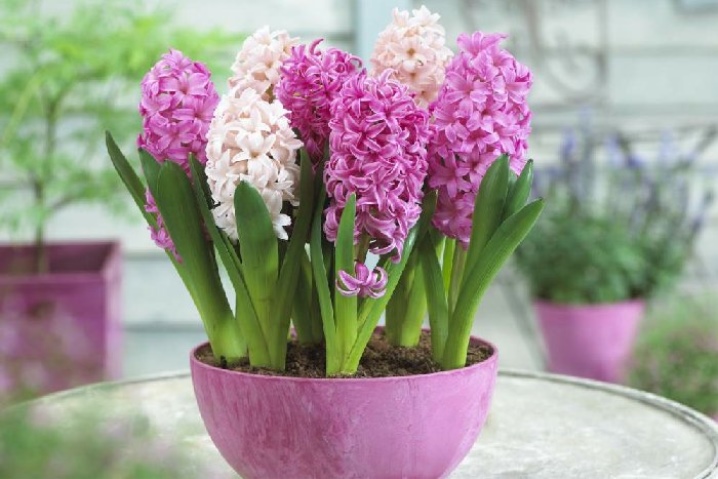
How to choose?
The success of growing flowers in a pot depends on what kind of seed the gardeners choose. To choose the right one, you must adhere to certain recommendations. Experts advise choosing bulbs with a minimum diameter of 5 centimeters. If you plan to grow hyacinth in a garden (in an open area), you can pick up smaller bulbs. The size of the seed depends on the variety, the allowable rate is from 4 to 6 centimeters in diameter.
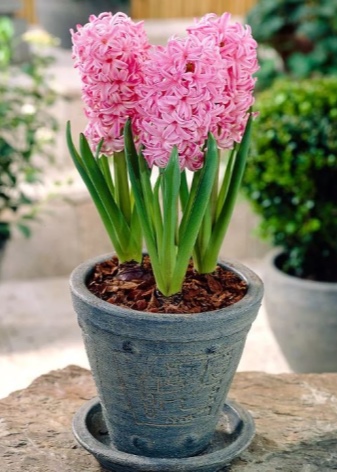

Look closely at the bulbs. They must be free from damage, rot and mold. Choose smooth and whole bulbs free from disease and insect damage. Their structure must be dense and strong. When choosing bulbs for germination, experts advise paying attention to the ratio of the diameter of the seed to the bottom of the bulb. The optimal proportions are 1.5–1.6: 1. You can buy bulbs in specialized stores at any time of the year. It is necessary to store them before disembarkation in a cool room at a temperature of 6 to 9 degrees. Such conditions will slow down the growth process and give rise to a state of dormancy. When buying bulbs in containers filled with soil, place them in a well-lit place.
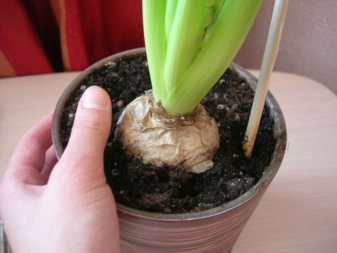

You can also buy already grown and blooming hyacinth at a flower shop. In this case, you do not have to spend a lot of time germinating the bulb, but only carefully look after the plant.
When purchasing an adult plant, many are wondering whether it is necessary to transplant a flower to a new place. Professional gardeners are divided on this issue. Some are sure that transplanting is stressful for the plant and in the process of working, the flower can be damaged. Others believe that planting in a new container will not harm the plant, but you can be sure of the quality of a self-prepared soil mixture.
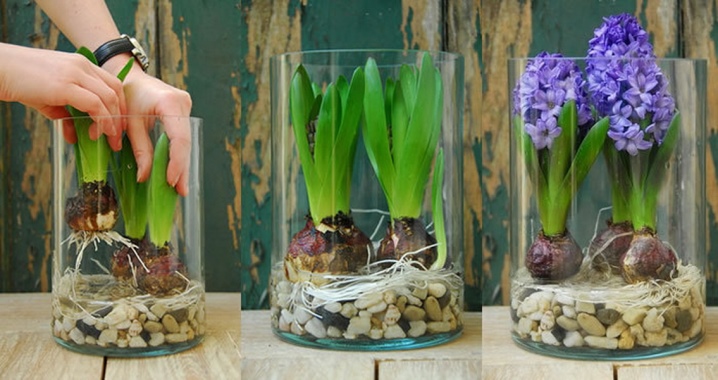
Landing
In order for the flower to please with lush color at home, it is necessary to properly prepare the bulb for planting. This process only applies to seed that has been dug out of the ground. Bulbs purchased from the store are pre-prepared (if we are talking about a quality product). Bulbs for sprouting flowers are dug out around the middle of summer. After they are carefully cleaned from the remnants of the earth and kept for 2 weeks in a room with high humidity. The optimum air temperature is 30 degrees Celsius. Over time, the temperature is lowered by about 5 degrees. In such conditions, the bulbs are kept for another 14-15 days. A few days before planting, the temperature is lowered to 17 degrees.
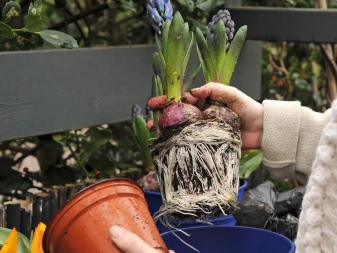

The rooting period of the seed depends on its quality and the specific variety. The average is 6 to 10 weeks. To get flowers by the beginning of spring, planting is carried out at the end of the second autumn month. If flowers are needed for the New Year, the bulbs are planted in the first half of September.
For planting plants, containers should be prepared. Disposable plastic cups are great for this.This is a simple and practical option. Jars, pots and other deep containers are also used. Do not forget to place a drainage layer of 1-2 centimeters at the bottom of the container. Experienced gardeners advise using small stones interspersed with sand. Next, a layer of earth is laid. Soil with a high acid content is not suitable for hyacinths. The best option is a mixture of turf, leafy soil and compost in different proportions. A little peat and sand are also added to it. Another recipe for a soil mixture is coarse sand and low-lying peat in a ratio of 50x50. You can also purchase ready-made soil from gardening stores. To prevent the processes of decay and mold formation, 5 to 7 millimeters of sand is poured over the substrate.
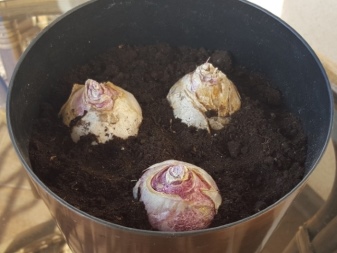

For distillation, it is recommended to choose pots with a height of 14 to 20 centimeters. As they grow, the flower bulbs will constantly grow and begin to protrude above the ground. With this in mind, the bulbs should not be planted at the edge of the soil, but in the upper third of the container. When planting, the bulb must not be screwed in, otherwise there is a high risk of damaging the seed. It is carefully pressed into the ground, after which it is carefully sprinkled with soil, leaving its upper part above the layer of earth. You can cover the bulging area with fine sawdust. When planting multiple bulbs, do not place them side by side. The required distance between them is from 2 to 2.5 centimeters.


Upon completion of planting, the plant needs rest. In order for the planting to give excellent results, it is necessary to create certain conditions for the flowers. The ideal temperature for them is 5 to 7 degrees. It is necessary to maintain normal humidity in the room and periodically moisten the ground when the upper layers dry. To protect the plant, a solution of potassium permanganate is added to the soil and sprinkled with wood ash. Planting pots can be kept in any cool place, even in the refrigerator.
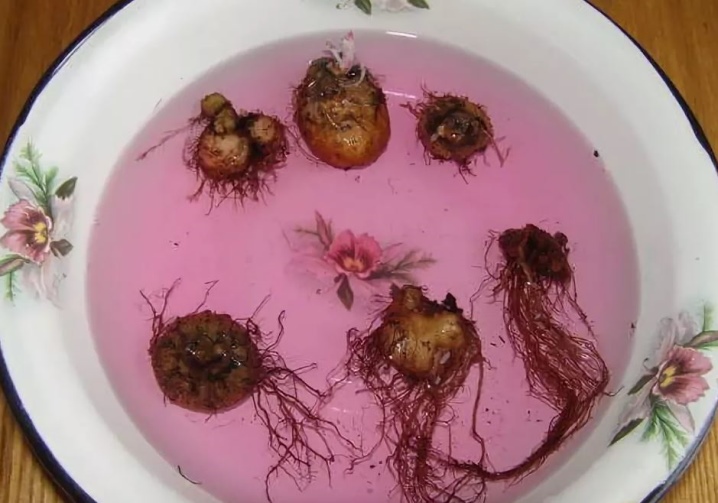
When 2 months have passed after planting, the container should be regularly checked for seedlings. When the seedlings reach 2, -2.5 centimeters in height, the container is transferred to a new place - illuminated and cool. A window sill is perfect for this. In such conditions, flowers keep for a month.
How to take care of it properly?
The process of caring for a hyacinth in a pot is very similar to caring for an outdoor plant. If it is necessary to grow a beautiful and lush flower at home, certain conditions are created for it, focusing on the seasons.
- Autumn. This period is considered the optimal time for planting. The bulbs, planted in separate containers, are sent to a dark room before the first shoots appear.
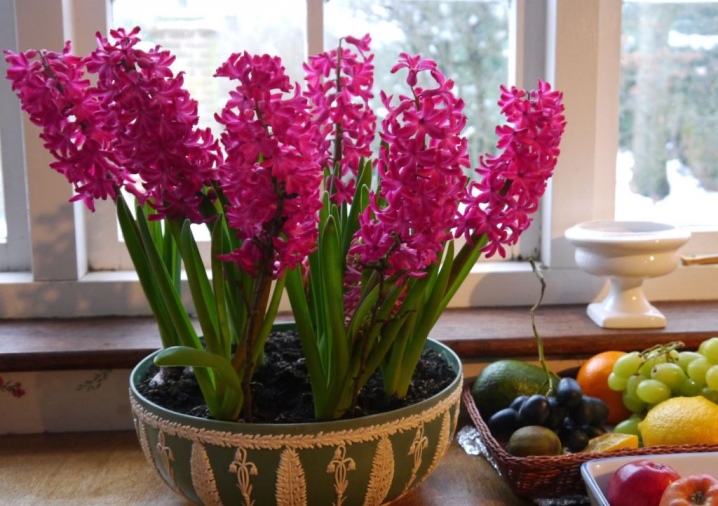
- Winter. If the work was done according to all the rules, the first shoots will be noticeable already in winter. During this period, you should carefully increase daylight hours. Early varieties are placed on the windowsill so that they delight with bright buds for the holiday on March 8.
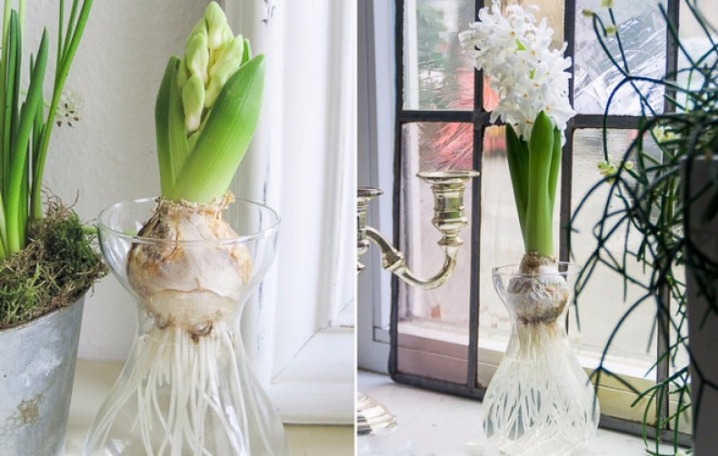
- Spring. With the onset of the warm season, the plant begins the flowering process. It was at this time that the flower needs abundant watering and fertilization. Hybrids and late hyacinth species finish flowering at the end of May. The bulbs are gradually prepared for rest.
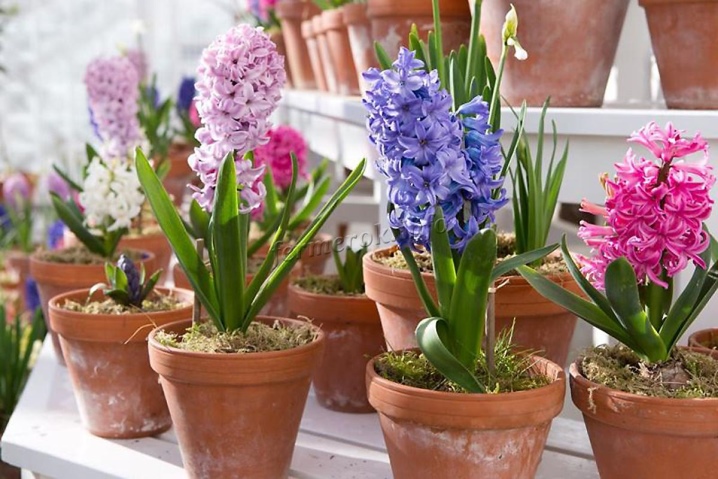
- Summer. In hot and sunny seasons, the plant rests. It is necessary to transfer the bulbs to a cold place (a refrigerator is great for this) and store them there until the fall. Without cold during the dormant period, the plant will not give a lush and thick color.
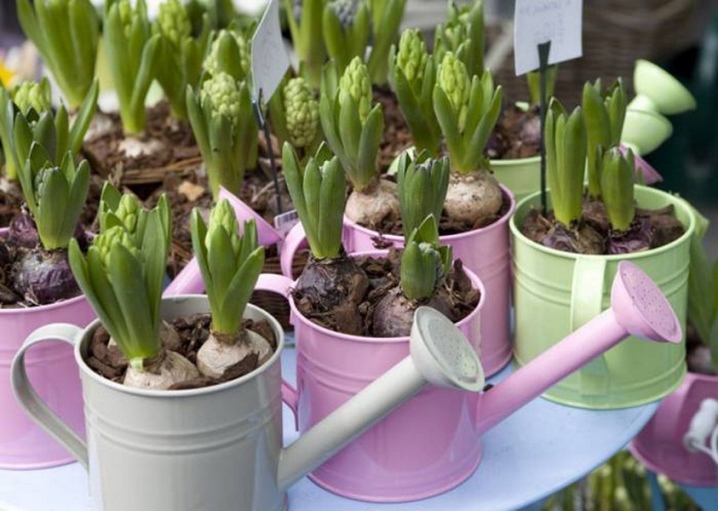
Top dressing
Fertilizers are essential for most home-grown plants, and hyacinth is no exception. Nutrients must be added during flowering and active growth of the flower. When the flower enters the dormant period, the amount of feeding is significantly reduced. Professional flower growers advise to apply fertilizers every 10-15 days. Its amount depends on the condition of the hyacinth and the season. The first time the plant is fertilized is when it is transferred from a dark room to a lighted area.Compositions are used, which are based on phosphorus. This is an important element for the normal development and flowering of a culture.
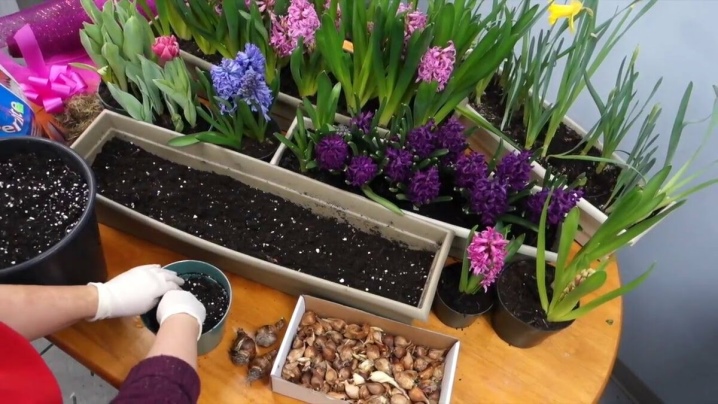
The second time they feed the flower at the beginning of the active development of the peduncle, so that the hyacinth blooms magnificently and colorfully. Phosphorus and nitrogen liquid dressings are added to the soil. During flowering, the plant loses a lot of strength, so you can't do without additional nutrition. For the third time, feeding is carried out at the end of the flowering period. As a recharge, formulations with potassium and superphosphate are great. It is recommended to loosen the soil after fertilization. This contributes to the better penetration of nutrients into the ground.
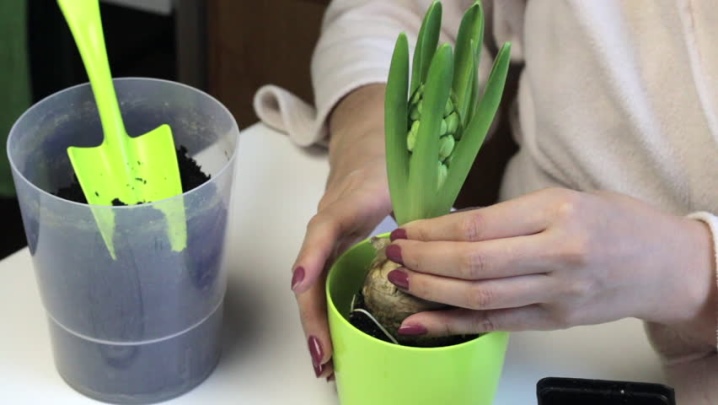
Watering
As soon as the plant is covered with buds, it is necessary to water it frequently and in small portions. This representative of the flora prefers moist soil. In the process of watering, you must adhere to two basic rules:
- make sure that the liquid does not get on the stems, foliage and buds of the plant;
- the water should not stagnate in the pot, otherwise the process of flower decay will begin.
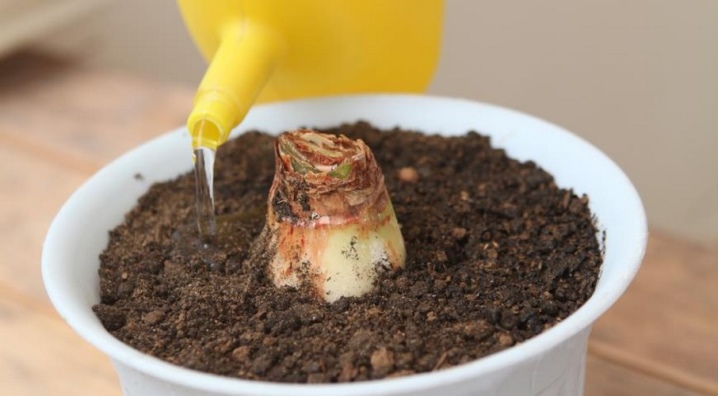
It is recommended to pour liquid into a tray and place a container with a flower in it. Remember that the bottom of the pot must have holes and a drainage layer. You can also add water by gently pouring it over the sides of the pot.
Lighting
Light is an important part of hyacinth compact care. As already mentioned, after planting the bulbs of the plants in the ground, the container with the planting material is placed in a dark room for about 2 months. Such conditions are mandatory for the full development of the root system of the flower. Young seedlings need natural light. As they grow, the amount of light must be gradually increased. It takes about 3 months for the flower to grow to 2.5 centimeters. After that, the pots are transferred to partial shade.
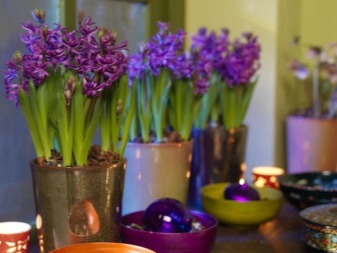
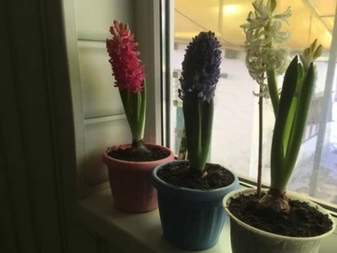
As soon as buds appear on the stem, the plant is transferred to the light. The best conditions for it are diffused light that gently illuminates the plants. Direct sunlight will harm foliage and flowers. Only mature plants can be exposed to the sun and only early in the morning or late afternoon. Hyacinth is only left under the sun for a few hours.
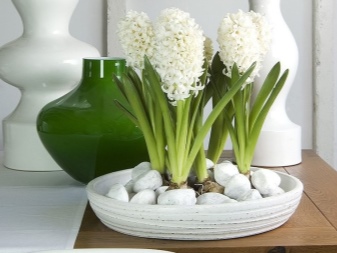

Temperature
To grow hyacinth, you need to keep the room temperature around 20 degrees Celsius. The plant does not tolerate a sharp change in temperature. Like other indoor plants, hyacinth must be protected from drafts. Heating devices also have a detrimental effect on it. With the onset of stable and warm weather, flower pots can be taken out to a balcony, loggia or street. Fresh air will be useful for the plant. During the growth of the flower, the maximum air temperature should be about 15 degrees. When the plant is fully formed (buds appear), it is transferred to another place with a higher temperature.
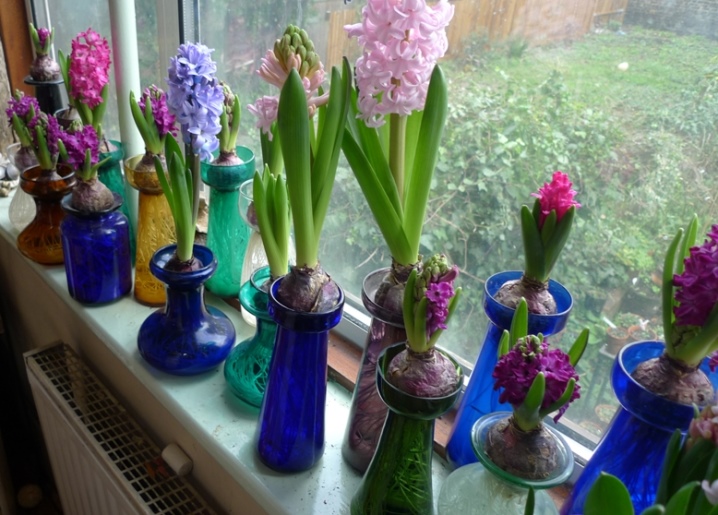
Reproduction
Under natural conditions, hyacinth reproduces with the help of children. The growth period of the bulbs takes a long time - from 3 to 5 years. This method is not entirely suitable for breeding at home, but some gardeners continue to use it. Breeders also use other breeding methods (cuttings, bottom cutting, scales or seeds).

Let's consider each of them in more detail.
- Cuttings. They are prepared during the formation of buds. Growers choose healthy and strong leaves with cuttings and carefully cut them off the stem. It is imperative to process the cut using disinfecting compounds and substances that stimulate growth. The cuttings are seated in a prepared container and covered with a thick film. Roots will appear in a few weeks. The first shoots will be visible after 50-60 days. Bulbs must not be dug out for the first two years. With the onset of winter, they are covered with a thick layer of mulch to protect them from hypothermia.
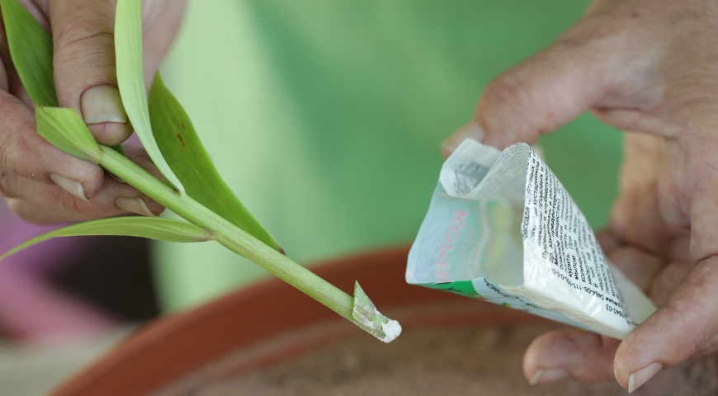
- Children. This breeding method is considered the most productive.With this method, the first flowers can be obtained three years after planting. The characteristics of the mother plant are also preserved as much as possible. To stimulate the formation of children, the bottom of the original bulb is cut crosswise.
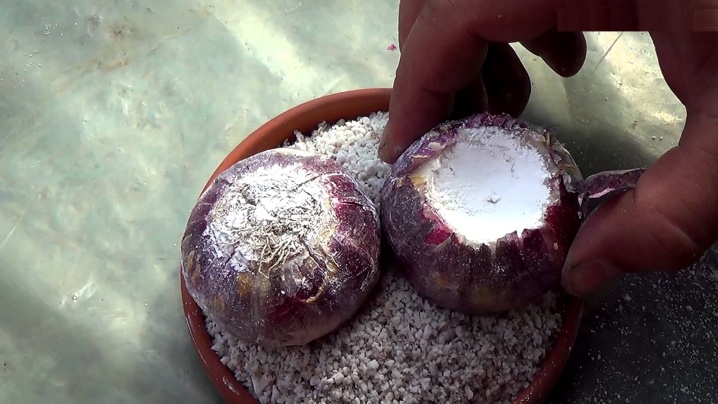
- Cutting the bottom. In this case, growers use large bulbs. To begin with, the seed must be prepared. It is cleaned of soil particles and left to dry for about a week. After that, an incision is left at the bottom of the bulb, forming a cone-shaped hole. A sharp knife is used for work. The incision site is processed. It is recommended to use a fungicide solution for this. At home, you can also use chopped charcoal. The prepared bottoms are laid out with an incision upwards and covered with a thick film. It will take 2 to 3 months until the first babies appear (their sizes will range from 5 to 10 millimeters).

- Dissecting the onion (reproduction by scales). If you choose this method of flower reproduction, you need to pick up large bulbs with a dense structure. Using a sharp knife, they are cut into several parts (5-6). In the field, each obtained slice is divided into separate scales and treated with a disinfecting agent. The obtained seed is stored in polyethylene bags. In the first month, you need to maintain a temperature of 20 to 25 degrees. In the second month, the temperature is lowered to 17-20 degrees. After the scales are planted in the ground and adhere to the general rules of care.
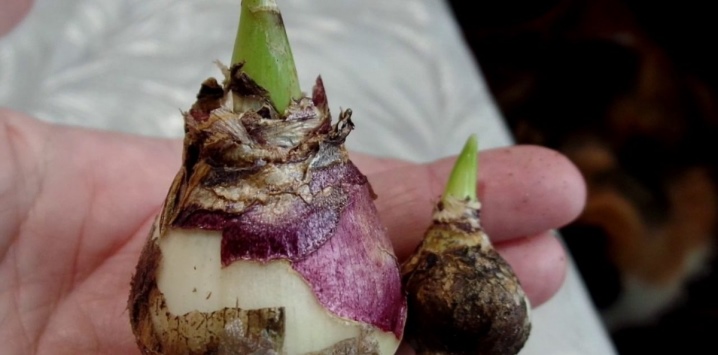
- Seeds. For germination of seeds, it is recommended to use a land mixture consisting of the following components: peat, sand and turf in equal proportions. Also place a drainage layer on the bottom of the container. Seeds are planted densely and shallowly, about 2 centimeters (150 to 200 seeds are used per 1 m²). The first month of autumn is the best time to plant. Then fresh sprouts will appear in the spring.

In winter, the container is stored in a cool room. The soil is periodically moistened when the top layer dries. Young seedlings need care, which should include weeding from weeds, loosening the soil, diffused lighting and feeding as they grow (ammonium nitrate and superphosphate are suitable).
Pests and diseases
All plants are susceptible to disease and attacks from harmful insects. Experts have identified a number of diseases that are most dangerous for home hyacinths.
- Yellow rot. The main symptoms of this ailment are the cessation of flower growth and a pronounced unpleasant odor. Bacterial rot liquefies the bulbs of the plant. At the first stage of the lesion, gray spots appear on the leaves.
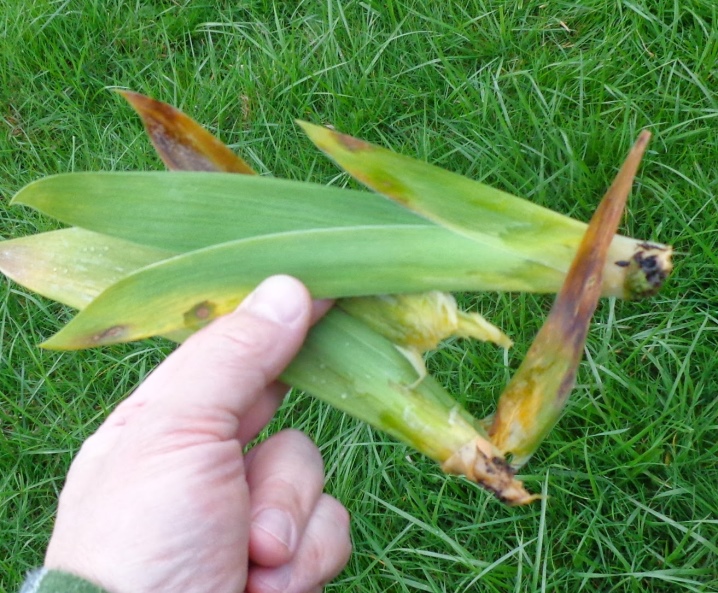
- Apical rot. The cause of this disease is dangerous microorganisms that live in the earth. The disease develops faster at high temperatures. The disease is determined by the following signs: rotting of the roots, brown depressions on foliage and petals, destruction of the foliage structure.
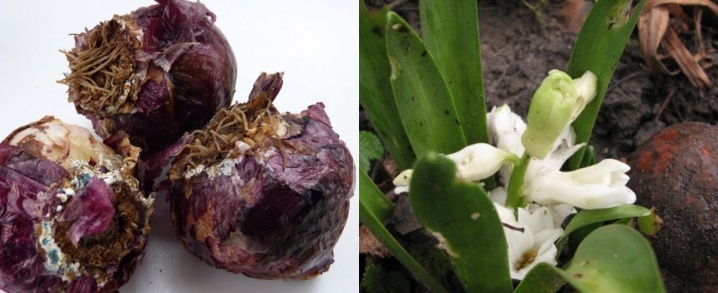
- Gray rot. This is a widespread ailment that is dangerous to many indoor plants. As a rule, the disease develops at the beginning of flower development. It can be identified by the presence of yellow spots that change in size and color to a brown tint. If drugs are not used in time, the root system begins to rot and the plant dies.
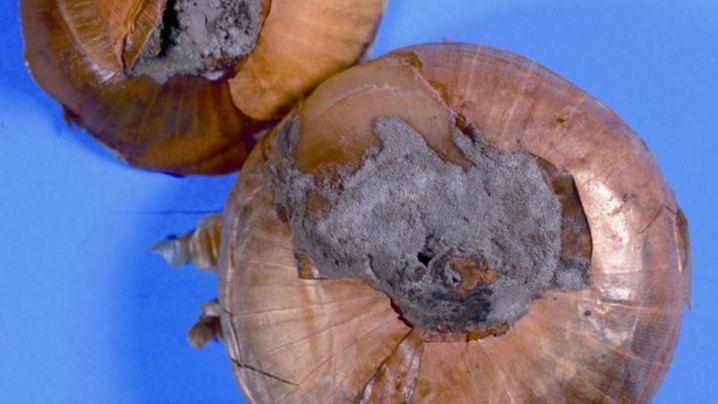
- Mosaic. The appearance of light green spots on the foliage indicates that the flower is sick with mosaics. They are randomly located throughout the plant. Areas of infection turn yellow and gradually dry out. Flower development slows down.
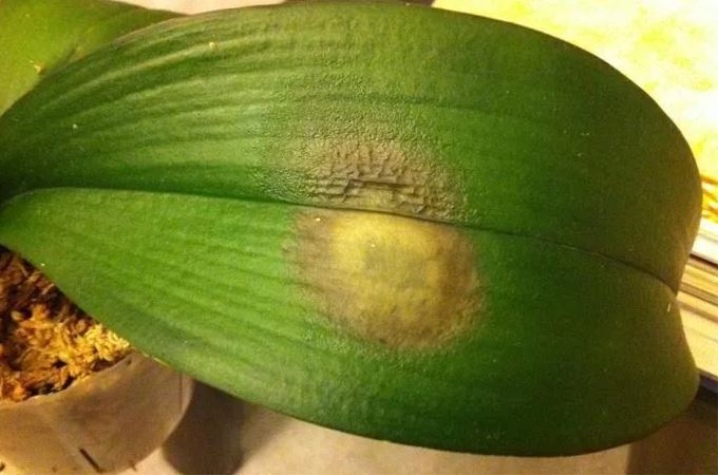
Pests
Plants in the open air are most often attacked by pests. The most dangerous pests for hyacinth are thrips and aphids. They suck the juices out of it, causing the leaves and flowers of the plant to dry out. To protect the culture from danger, they are treated with aphicides. Garden stores offer a wide range of products to safely and effectively protect crops from pests.
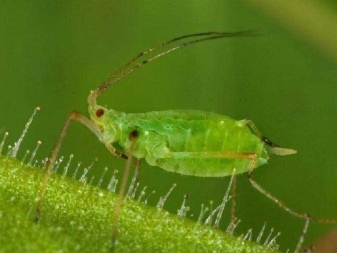
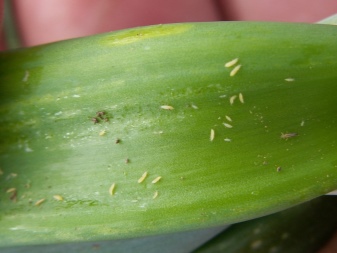
Also nematodes are dangerous for flowers. They are gallic or stemmed. The second type of parasite is most common. Nematodes attack both the stems and the root system of plants. On store shelves, you will find drugs designed to fight nematodes. You can find both prophylactic and medicinal products on sale. Before planting, the powder composition is poured onto the ground in a thin layer. After that, the earth is mixed, going deeper by 5 centimeters.
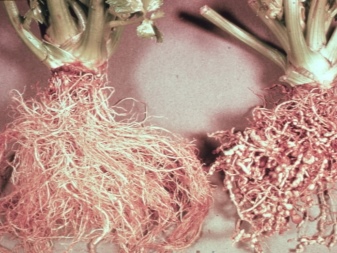
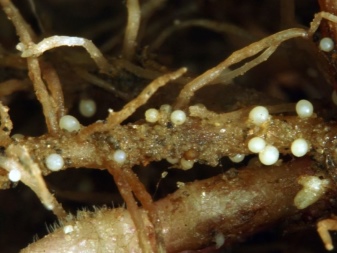
For information on how to properly care for hyacinths in a pot, see the next video.







































































































The comment was sent successfully.